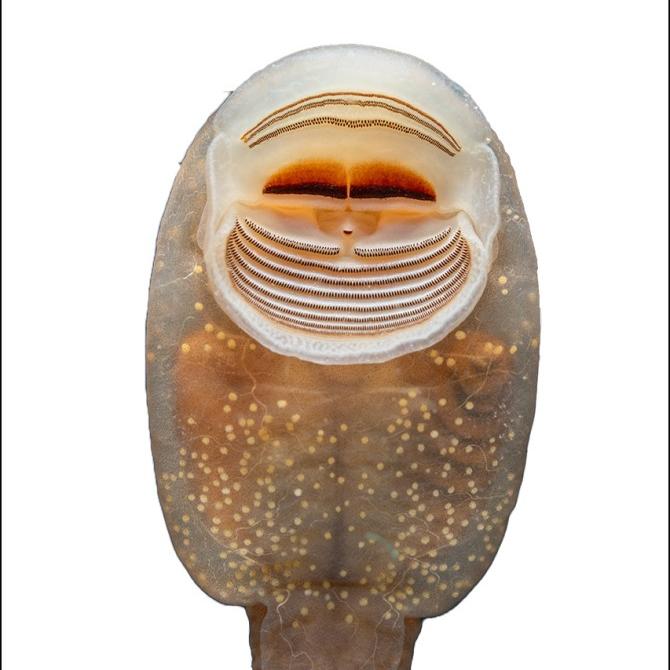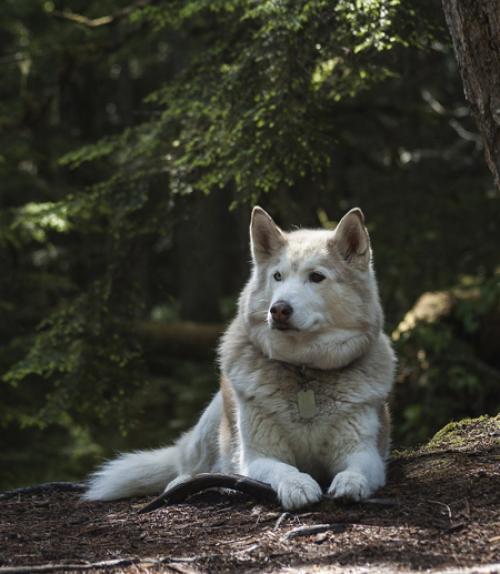In an effort to settle the debate about the origin of dog domestication, a technique that uses 3-D scans of fossils is helping researchers determine the difference between dogs and wolves.
In the ongoing debate, one camp believes dogs were domesticated in the Paleolithic age (more than 17,000 years ago), when humans were hunter-gatherers. The other camp believes domestication occurred in the Neolithic age (17,000 to 7,000 years ago), when humans first established agriculture and civilizations.
Abby Grace Drake, a senior lecturer in the Department of Ecology and Evolutionary Biology, and her colleagues have been analyzing 3-D scans of ancient fossil canid mandibles to determine whether they belong to dogs or wolves. The answer, they find, is not so simple.
The researchers found that in the early stages of domestication, the skull changed shape but evolution of the mandible lagged behind and did not co-evolve with the skull. Their study is reported in the Aug. 25 issue of the journal Scientific Reports.
“A lot of the fossil evidence for the date of dog domestication is based on morphological [structural] analysis of mandibles,” said Drake, the paper’s first author. Robert Losey, an anthropologist at the University of Alberta, Canada, is a senior co-author of the paper. “Our study shows that when you measure modern dog mandibles and wolf mandibles using 3-D measurements you can distinguish them, and yet when we looked at these fossil mandibles, they don’t look like dogs or wolves.”
Wolves have fairly straight mandibles while dog mandibles are curved, structural features that become evident in a 3-D scan. In a proof of principle, when analyzing the 3-D structures of mandibles of modern dogs, Drake and colleagues correctly classified 99.5 percent of the samples as being dog or wolf.
However, 3-D analysis of fossil records from four ancient sites, two from Russia and two from Alaska, found that most of those fossil mandibles could not be classified as either dog or wolf, even though features in canid skulls from the same sites as well as other data proved that the samples were dog remains.
Other evidence also showed that these canids were domesticated: The remains were found within human dwellings, remains at both the Russian sites revealed butchery marks, indicating that they were eaten, and isotope analysis of canid and human remains from one of the sites – Ust’-Polui, in the Russian Arctic – showed canids and humans were both eating fish, and humans were feeding their canids.
Since mandibles do not appear to evolve as rapidly as the skull, the results show they are not reliable for identifying early dog fossils, Drake said.
Four of 26 fossil mandibles from Ust’-Polui, which was occupied from 250 B.C. to 150 B.C., were identified as dogs, while three of the mandibles from the site were identified as wolves.
At another site, Ivolgin, in southern Russia, occupied between 300 B.C. and 200 B.C., none of the 20 mandibles were identified as dogs, though 8 were identified as wolves. All of the skulls found at these sites, 12 from Ivolgin and five from Ust’-Polui, were clearly identified as dogs.
Canid fossils of wolves and dogs from the Alaskan sites from 1600 CE were used as controls and to compare genetic testing against the structural 3-D data.
A 2015 paper by Drake and Michael Coquerelle, an anthropologist at the University Rey Juan Carlos in Alcorcon, Spain, and a co-author on the current paper, used the 3-D technique to refute a claim that dogs existed 30,000 years ago. That claim was based on linear caliper measurements of skulls. Linear measurements are inaccurate because dog and wolf skull sizes overlap, Drake said. On the other hand, 3-D analysis of skulls uses landmarks across the skull to identify differences between dogs and wolves in the angle of the muzzle, or snout, and in the angling of the eye orbits.
“The earliest dogs I’ve seen in my analysis are from 7,000 to 9,000 years ago,” Drake said.
The study was funded by the Social Sciences and Humanities Research Council of Canada and the European Research Council.
This story originally appeared in the Cornell Chronicle.






